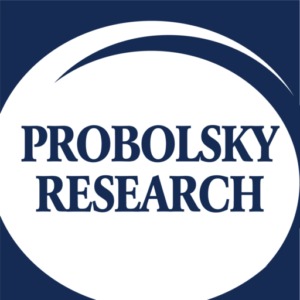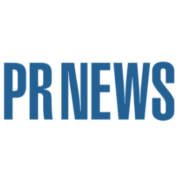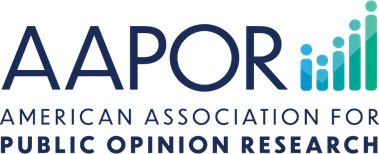3 Ways to Use Opinion Research During Crisis Management Situations

Originally published in Communications World Magazine
Even for the most well-prepared organization, things can blow up once in a while. Just ask Samsung.
Within the past year or so, exploding mobile phones, passengers being dragged down the aisle and production companies purging executives and big-screen stars have all faced media scrutiny and angry public opinion. These moments of crisis have threatened brand reputations and customer loyalty.
Such crises undoubtedly merit an immediate call to the PR and legal departments, but the experienced know that the real key to surviving them involves employing the help of a pollster as well. Because when brand reputation and customer loyalty are at stake, or when facing government intervention or legal action, there is no substitute for statistically valid research to help guide messaging and targeting.
Based on our experience with crises, we have developed a recommended action plan for businesses in the immediate aftermath of a disaster. There are four crucial steps:
- Gather immediate feedback from those affected through social listening tools.
- Conduct qualitative and quantitative research to gauge broader impact and strategize a management approach.
- Track reactions throughout the crisis to assess public response and uncover new information.
- Follow with post-crisis research to repair brand image and prepare for the future.
If used correctly, the action plan can help you crystallize your strategy and approach to navigating these turbulent conditions. Here are some specific examples of how polling and other opinion research has been used to guide the response to crises.
Identifying the right messengers
During crisis management, deciding who should respond is often just as important as the response itself. And sometimes, it’s not the person you might expect who should be tasked with delivering your organization’s message.
In response to a mechanical failure that led to a major environmental disaster in the U.S., opinion researchers were employed to learn more about the appropriate course of action they should take. Among the various findings, one stood out in particular: company spokespeople were not trusted. Rather, those who were polled showed a greater trust in the hard-hatted field workers that were employed by the company.
Accordingly, the company opted to include field workers at every media event, in addition to print and video advertisements, in response to the disaster. It also decided to step up field patrols to demonstrate a greater presence and show the public that they were taking an active role in preventing similar occurrences in the future. As a result, the company was able to foster a higher level of trust and engagement within the affected community.
Responding to the correct audience
In addition to identifying the right messenger, it is crucial to determine the correct target audience as well. In many cases, the affected stakeholders range far more broadly than what is immediately apparent, and can only be uncovered with adequate opinion research.
This is exemplified by the large U.S. West Coast farming company that was forced to recall several of its packaged vegetables after dozens of people got sick from an outbreak of a foodborne bacteria. After the incident, research found that, in addition to those directly affected by the foodborne bacteria, there were national implications for the brands associated with the company. Moreover, panic had spread throughout the local community surrounding its farming operations over a fear of job losses and the potential cross-contamination of other agribusinesses.
To assuage fears and show a redoubled commitment to the region’s economic recovery and food safety, the company decided to deploy company representatives and independent professionals with science backgrounds to community events and neighboring farming operations. As a result, a strong group of advocates from the local community have banded together to help in the future because they appreciated the company’s full-fledged response.
Communicating through the appropriate channels
After you have decided on the appropriate messenger and target audiences, you must also decide how to share your message to make sure it is received. Gauging public opinion through polls and focus groups can also help in this regard by showing which channels are most used by your audiences, and also where the most criticism is coming from.
In a financial scandal involving a medium-sized municipal government, an employee stole millions of dollars in taxpayer money. Regional and local media were relentless in their attacks on the government managers and elected officials for their handling of the situation. In response, the government employed the help of a pollster who found that a particular local newspaper and AM radio station were the go-to places for residents to get their news, and both outlets were hostile to the agency already reeling from the financial loss.
To mitigate the damage, the government agency brought in specialized communication consultants who already had established relationships with both the newspaper and radio station. Even though the bad employee was fired and was being prosecuted by the district attorney, the coverage from both news outlets continued to rail against the agency and their governing board for lack of oversight. However, by hiring the right PR team, the government agency gained access to a direct line of communication with the hostile media, and at least had a fair shot at responding to each charge.
Trust PR and crisis communication professionals to effectively fight fires with their skill and knowledge in the heat of a crisis. But when the business turns to bringing things back to normal—showing stakeholders and the public that you are fixing the problem or have a solution in the works—the only way to uncover the direction of public opinion is to do research.
Adam Probolsky is president of Probolsky Research, a women-owned, minority-owned, full-service market and opinion research firm working on behalf of corporate, election, government, labor, nonprofit and media clients. Probolsky wrote a weekly column for the Orange County Register for four years and volunteered for nearly eight years with the Orange County Sheriff’s Department as a spokesperson.







